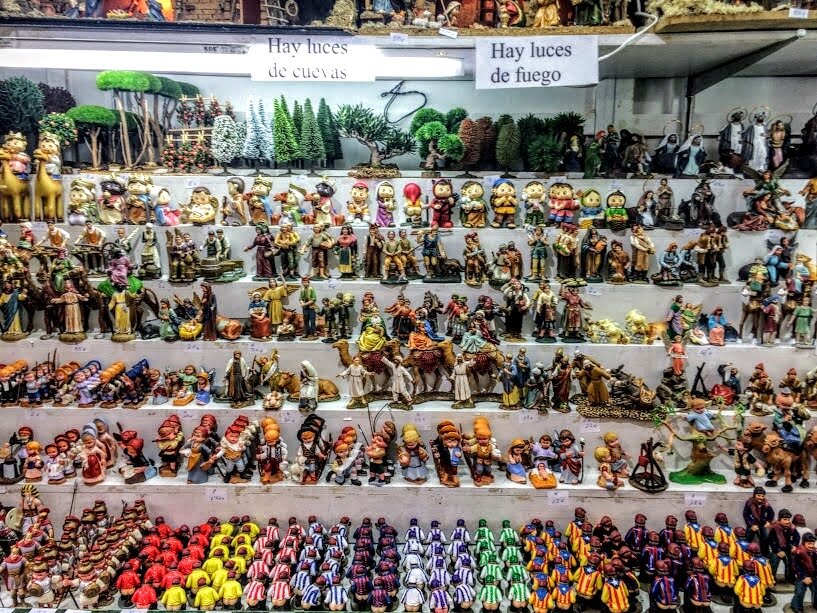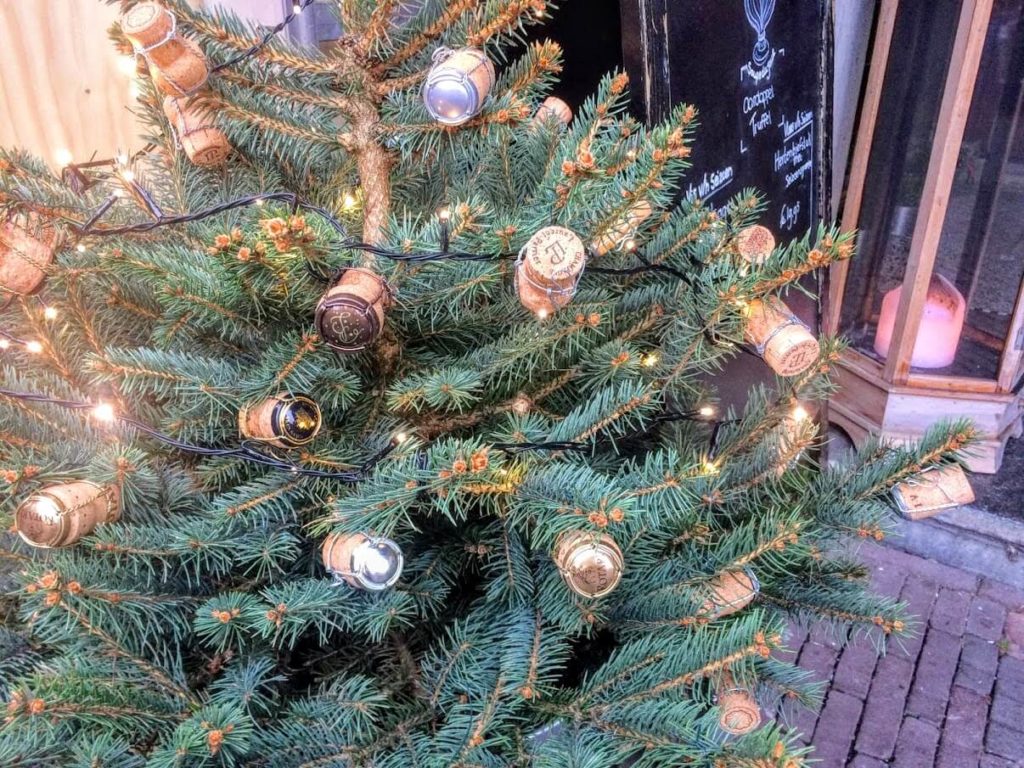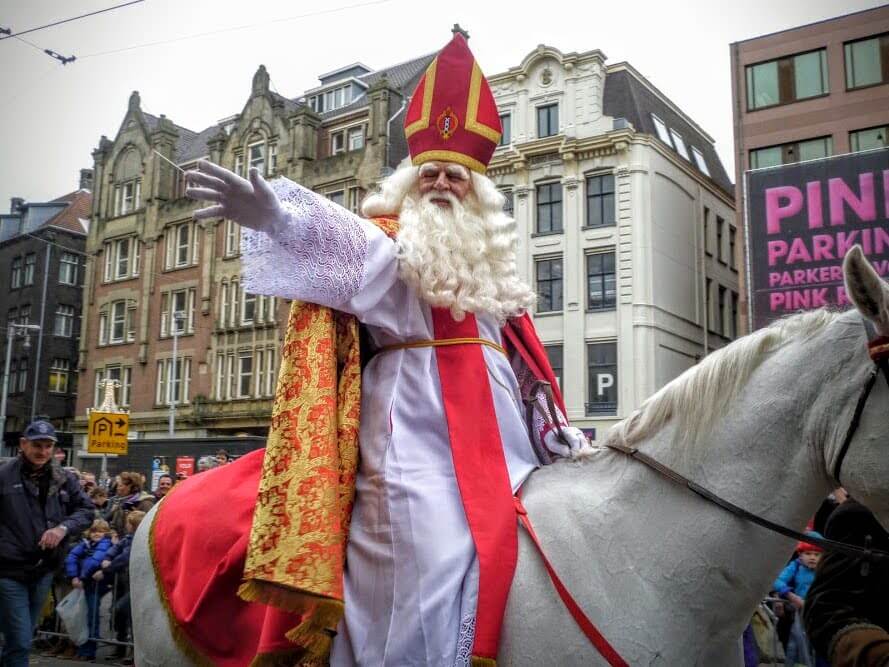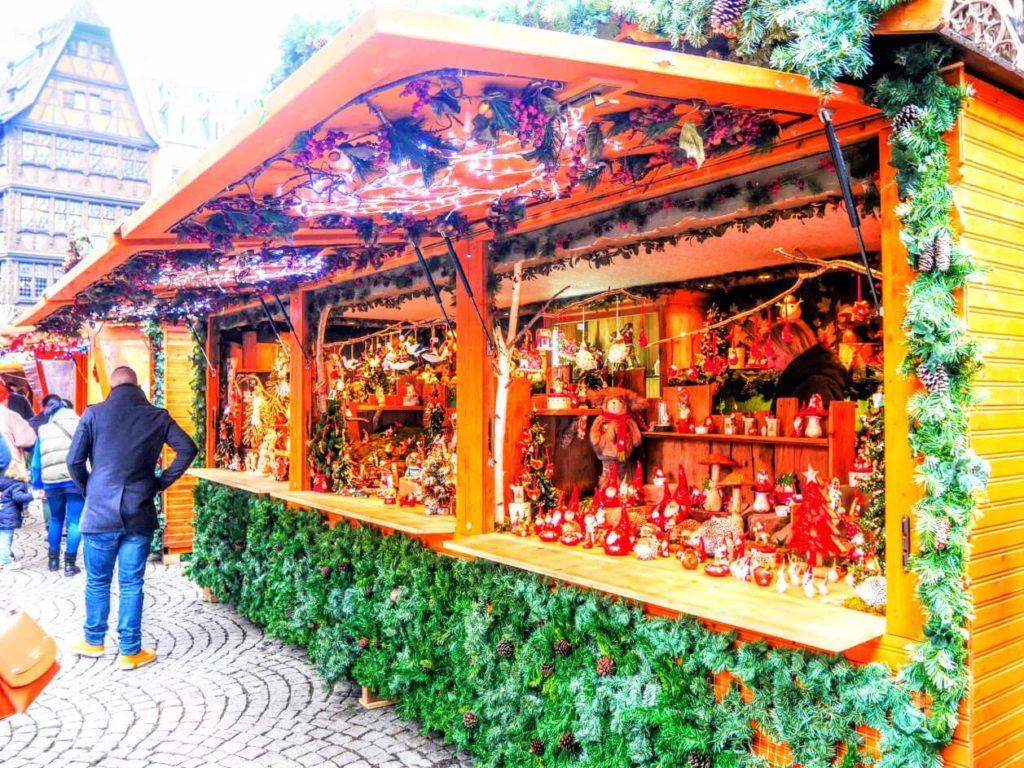December is one of the best and most magical months to travel to Europe. Cities are glowing with beautiful decoration, many Christmas markets are organised, and everything looks so festive. Having such a rich culture, there are so many different Christmas traditions in Europe, as well. I did a bit of research and presented some of them here.
Christmas Traditions in Europe
Different Christmas traditions in Europe were always interesting to me. I’m often asking people to describe me some unique customs typical for their countries. Christmas is usually celebrated with family and in the privacy of people’s homes. So, when you’re travelling, it’s a bit hard to learn about them. That’s why I asked some of my fellow bloggers and expats living in the Netherlands, to tell me more about how they celebrate Christmas in their countries.
Croatia
Christmas in Croatia is one of the most important holidays of a year. Preparations start early in December with Saint Nicholas Day celebrated on December 6th. Children clean their shoes and put them in a window. If they were good, they’d find sweets and little presents in them in the morning. However, if they were a bit naughty throughout the year, they’ll get a golden switch.
On Christmas Eve, we decorate our Christmas trees and eat fish or seafood. During the day, cookies and sweets are being prepared, as well. In the evening we’re putting Christmas presents under the tree, and they could be opened either the same evening or on Christmas morning. In my family, we could never wait for the next morning and would open the presents right after the Christmas Eve dinner. Many people attend the midnight mass that evening, as well.
Christmas Day is considered to be a family day in Croatia. So it’s a time when you either go to visit your extended family, or they will come and visit you. Like with everything in Croatia, each region and the city has its own unique Christmas traditions, so they could vary slightly depending on where you are.
⤷ Check out my Ultimate Croatia Travel Guide here
Spain
Canary Islands
Food is an important part of Christmas celebration in Spain. However, meals being prepared on the Canary Islands could be different from the one in the mainland. Usually, the whole family is involved in preparing the food and decorating the house for the Christmas dinner. Some typical food that could be found on a Christmas table is soup, steamed shrimps, pork or turkey, ensaladilla (a dish made with mashed potato, tuna and mayo), cheese and sausages platter, bread, boquerones (kind of an anchovy) and also anchovies. Of course, there’s also a desert, and it could go from ice cream to very elaborated tarts full of chocolate.
In Spain, presents are exchanged on the Epiphany (The Three Kings) celebrated on January 6th. Something typical for Spain is having El roscón de reyes (it’s a cake filled with creme) before or after opening the presents. A funny custom related to it is that there are always a ‘king’ and a ‘bean’ hidden in a cake. If you get a bean, you’re responsible for buying El roscón de reyes next year. And if you get a king, then you need to put a crown on your head. Churros and hot cocoa are also very traditional to have on that day.
Angrick from Canary Islands
Catalonia
If you are looking for some of the strangest Christmas traditions in Europe, look no further than Catalonia. This region prides itself on being distinct from Spain, and when it comes to Christmas, it’s no different. Of course, Catalonia takes part in some of those typical Spanish Christmas customs such as the Mass of the Rooster, a big Christmas Eve dinner, and The Three Kings on January 6th.
However, what makes the Catalan Christmas so unique, is one central figure: the Caga Tió (or Tió de Nadal). The Caga Tió quite literally is a pooping log. Every year on December 8th, the tió is brought in from the forest. He is given a blanket because he is cold, and food to eat because he is hungry. In fact, he is given so much food that, just before Christmas, he has to poop. So, naturally, being the giving people they are, the Catalans have to help him with this endeavour. A few kids are rounded up, given a stick, and begin to hit the tió while singing a song in Catalan that roughly means, ‘poop sweets tió, if you don’t want to poop, we will hit you with the stick’. After one, two, maybe three tries, the children look under the blanket and discover something every kid would love to see. The tió has ‘pooped’ out sweets.
What at first glance seems like a weird Christmas tradition, turns into this fun, elaborate way for children to get Christmas candy from their parents. It’s one of the most unusual Christmas traditions in Europe, and one everyone should experience at least once.
Natalie Lineberger from Tourist 2 Local
⤷ Read My Travel Diary: Three days in Barcelona here
Czech Republic
For Czechs, Christmas is the most important holiday of the year. Preparations start long before the actual festive days, with shopping for gifts, cleaning the home and getting everything ready for Christmas.
In the Czech Republic, it starts on December 24th, with Christmas Eve being the time when the whole family celebrates with a lovely dinner. After it, the presents can be found under the Christmas tree. So Czechs unwrap their gifts a day sooner than in many other European countries. The whole day of December 24th people are not supposed to eat any large meal until the Christmas dinner is served. Munching on Christmas cookies or the unique Christmas pastry called vánočka is allowed. Children are promised to see a golden pig if they manage not to eat. Nowadays the tradition has morphed into kids being given a little chocolate pig wrapped in golden tinfoil.
Some families engage in several different traditions. Little candles are placed in walnut shells and floated in water in a sink. Every family member gets one. If someone’s small boat floats away from the others, it means that particular family member will soon leave home. Since the Christmas dinner traditionally consists of fried carp with potato salad, many families also place a scale under their plate to ensure some monetary gains in the future.
Veronika Primm from Travel Geekery
The Netherlands
There is something unique about Christmas tradition in the Netherlands that sets it apart. Yes, the Dutch love to decorate their houses and set up a Christmas tree just like anywhere else. But the holiday is shared with another one: Sinterklaas on December 5th. A unique children’s holiday. Usually the Dutch do gifts on Sinterklaas evening instead of a Christmas Day if they have small children (or there are any in the family). Only when the kids are old enough, and they stop believing in Sinterklaas the presents move under the Christmas tree.
Sinterklaas is also the reason the Dutch will wait with decorating their homes for Christmas until he left on December 6th. You won’t see a Christmas tree in many Dutch houses before that date. When Christmas comes around, the Dutch tend to celebrate it with their families. Different than the US, for example, the Netherlands has two Christmas days. Being as pragmatic as they are, this works out perfectly. One Christmas day is spent with one family and the other Christmas day with the in-laws (or the other way around).
The main meal can be a lavish Christmas dinner, but more often than not the Dutch prefer a more traditional way to eat, and it’s called Gourmetten. It involves a hot grill in the middle of the table with individual pans. Small pieces of raw meat, fish, and vegetables are placed around the table, and everyone can cook their own meal. It’s a great social event and typically Dutch.
Gerjo from Hidden Holland
⤷ 10 Things you should do during the Christmas Season in Amsterdam
Ukraine
Ukraine has quite a unique Christmas tradition in Europe because both December 25th (Western Christianity Christmas Day) and January 7th (Eastern Orthodox Church Christmas Day) are national holidays. Majority of Ukrainian people celebrate Christmas on January 7th. On this day they usually visit relatives and friends, eat delicious food, and give presents to each other.
On Christmas Eve, which is the evening of January 6th, people prepare special festive dinner and spend this evening with their closest family, during which they also pray and remember beloved dead ones. Carolling is an important part of Christmas celebration in Ukraine, as well. And mostly groups of young people engage in Christmas carolling during the holidays. Something very unique for Christmas celebration in Ukraine is shopka, a portable nativity scene with figures created in the form of puppets.
Ira from Ukraine
United Kingdom
In the UK, Christmas Day is the most special day to celebrate as adults usually have to work on Christmas Eve – and the shops open again on the 26th for Boxing Day sales. Decorating Christmas trees in time for the big day has been a popular tradition ever since Prince Albert (Queen Victoria’s husband) decorated one at Windsor Castle in 1841. This is where Father Christmas leaves gifts for children. In return, carrots, mince pies and beer are left out for him (and his reindeer) on Christmas Eve before children go to bed.
Families eat a large roast dinner on Christmas Day, which involves roast meat (usually turkey), roast potatoes, carrots, brussels sprouts, parsnips, stuffing, Yorkshire puddings and pigs in blankets (little sausages wrapped in bacon) – all smothered in gravy. Christmas crackers are left next to each person’s plate, which they have to pull with whoever is sitting next to them. Inside, there’s usually a toy or little gift, joke and paper hat, which must be worn when eating!
At 3 PM, the Queen’s Speech is broadcast on the TV, where she shares her thoughts on the year to date and the future. A final important British Christmas tradition is the giving and receiving of Christmas cards. It has been a popular custom since the 1840s, and it’s something of an honour to be on one’s Christmas card list.
Justine Jenkins from Wanderers of the World
Greece
Being famous for its great cuisine, preparing food is an important part of Christmas celebration in Greece. Preparations start a few days before Christmas, with making some very special Christmas sweets. There are at least three different types that are popular all around Greece (in some villages they have even more) that are called melomakarona, kourabiedes and diples.
On the day before Christmas, kids gather really early in the morning to visit the houses in the neighbourhood, sing Christmas carols, ring their bells and in return get some money. The same thing happens on December 31st with New Year’s carol.
On Christmas Day the whole family usually eat together. Just imagine a big table with all aunts, uncles, cousins etc. The meal typical for the Christmas lunch is a turkey in the oven with potatoes.
On New Year’s Day, Greek prepare a special cake called basilopita, which has a coin hidden in it. So, the family gathers, and each member gets a piece of cake. The one who finds the coin will have luck throughout the whole year.
Dimitra from Greece
Hungary
In Hungary, the countdown to Christmas is marked by the traditional advent wreath. It consists of four white candles, representing faith, hope, joy and love. The candle is lit each Sunday leading up to Christmas, with the last candle lit on December 24th, Christmas Eve.
By the tradition, the Christmas tree is brought to every house by angels on December 24th. It is a Hungarian custom to decorate the tree with a special candy called szaloncukor, a sweet fondant covered in chocolate and wrapped in shiny foil. Several kilos of these sweets are used to decorate the tree. Usually, all the foil wrappers are empty by January 6th when the Christmas tree’s been taken off.
The big family dinner contains a spicy fish soup called Fishermen’s soup, made with carp and hot paprika. Other typical Christmas meals are stuffed cabbage, cabbage leaves filled with rice, pork and more hot paprika for the flavour. Poppy seeds are supposed to bring good luck, and there are several different kinds of desserts with poppy seeds. The most popular ones are the poppy seed roll and poppy seed strudel.
A special Hungarian Christmas custom is cutting up an apple into as many slices as the number of family members around the dinner table, who then eat it together. It is believed to ensure they will still be sitting around the same table together the next year. Many people attend midnight mass after the family celebration.
Besides the Christmas day, in Hungary, Saint Nicholas or Mikulás is celebrated on December 6th. All the children polish their shoes the night before and place them on their windowsills. If you’ve been good, your shoes will be filled with sweets. If you have been naughty, Mikulás’ helper, Krampusz, a mischievous devil, will leave a bundle of sticks wrapped in foil instead.
Clara from Hungary
Italy
Many fascinating European Christmas traditions could be found in Italy, as well. Christmas time in Italy starts on December 8th with a celebration of the Immaculate Conception, which is also the national holiday. Another important holiday is celebrated on December 13th – Saint Lucy, who is a saint protector of the sight.
A tradition particular for Italy is that women gather in the evening to prepare the traditional Christmas sweets. Volunteers from the village, together with children from the choir and the church, prepare a live Nativity Scene with animals, like the one Christ was born at. Parents buy Christmas gifts for their kids and take them to church. Someone dresses as Santa then, loads the presents and on Christmas Day goes around the village and gives the gifts to the children.
Nativity scenes are also arranged in private homes, only, of course, with the small figures. The tradition of creating the Nativity scenes actually comes from Italy, from Saint Francis of Assisi who made the first one in the 13th century. Food is also an essential part of Italian Christmas tradition, and Christmas meal usually consists of different meat dishes, lasagne, and cakes pandoro and panettone.
Maria Gracia from Italy
⤷ Read my Guide to Three Days at the Lake Como on a link here
Romania
Christmas can mean presents, family reunion or traditions. But for Romanians, all of these are about food. Some of the traditional food dishes are sarmale (cabbage rolls filled with minced meat or rice, if we are on the fasting period), salata de beof, cozonaci (cake similar to panettone), steak and other meat and sweet based dishes.
Christmas season in Romania kicks off right after St. Andrew’s Day (November 30th), followed by the National Day on December 1st. On Saint Nicholas’ Eve (December 5th), all Romanian children clean their boots, place them at the door (or window), and go to sleep waiting for Mos Nicolae to fill them with presents. In the morning, the most obedient of them will discover many little surprises, mostly sweets, tucked into their shoes, while the naughty ones will only find the symbolic rod. All the Nicolae and Nicoleta named people celebrate their name day then, as well.
Before Christmas Day, children earn some money and sweets by carolling. On the Christmas Day, a name day of anyone named Cristian, Cristi, Cristiana is celebrated, as well. December 26th is an important day in Romania, too. A celebration of Saint Stefan is taking place then, and it’s again a name day celebration. Everything goes a bit quiet after that to prepare for New Year’s Eve.
Oana from Romania
Russia
When talking about Christmas traditions in Europe, one shouldn’t forget Russia. However, Christmas Day isn’t a special holiday for Russian people. The New Year Day is what is important, and Christmas is mostly a holiday more religious people are celebrating. The date is also different, in Russia Christmas is celebrated on January 7th.
So when talking about the festivities, they are mostly linked to the New Year celebration. Usually, there is a big party with lots of food, especially salads with mayonnaise. Some special meals traditional in Russia are salad Olivier, seledka pod shuboy (herring under the fur coat) and kholodetz. Although many different salads could be prepared, these are the most typical for the New Year’s Eve.
Preparations for New Year are mostly related to food. There should be fruits, especially tangerines, and some pickled vegetables such as cucumbers, cabbage, tomatoes, mushrooms on a table. Usually, there is a New Year’s Tree with different decorations such as balls, toys, cones, lights and a star on the top. At midnight, wishes are made, and people drink champagne. They can dance, sing together, talk, eat, drink and watch TV on that day. The movie which is always on a TV on December 31st is ‘The Irony of Fate’, and it definitely became a part of the holiday’s tradition.
Tatyana Dmitrieva from Russia
⤷ Read my Saint Petersburg Travel Guide here
There are so many beautiful Christmas traditions in Europe. How do you celebrate Christmas in your country? Let me know in the comments.
Slider photo by JESHOOTS.COM on Unsplash.











